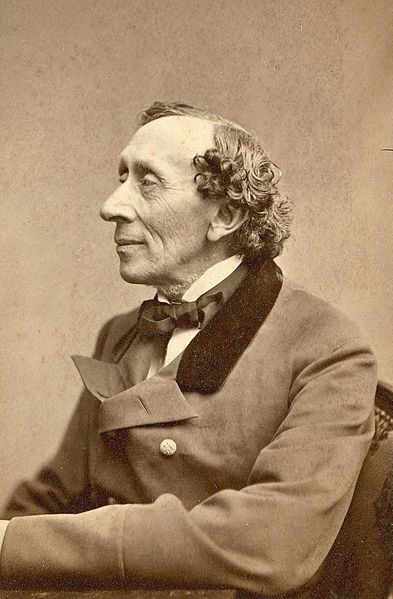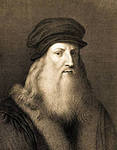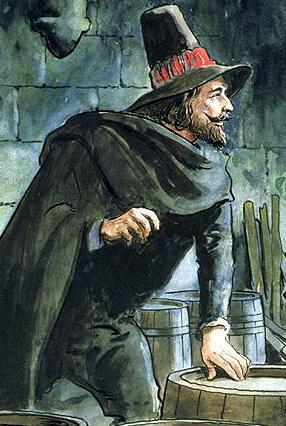- Преподавателю
- Иностранные языки
- Разработка урока Знаменитые люди прошлого для 8 класса
Разработка урока Знаменитые люди прошлого для 8 класса
| Раздел | Иностранные языки |
| Класс | 8 класс |
| Тип | Другие методич. материалы |
| Автор | Караганова О.А. |
| Дата | 09.05.2015 |
| Формат | docx |
| Изображения | Есть |
Hans Christian Andersen
Hans Christian Andersen, (April 2, 1805 - August 4, 1875) was a Danish author and poet famous for his fairy tales.
Andersen was born in Odense, Denmark, on the April 2, 1805. He was the son of a sickly young shoemaker of twenty-two and his several years older wife. The whole family lived and slept in one little room.
Hans Christian showed imagination early. He built himself a little toy-theatre and sat at home making clothes for his puppets, and reading all the plays that he could borrow; among them were those of Ludvig Holberg and William Shakespeare.
King Frederick VI was interested in the strange boy and sent him for some years, free of charge, to the grammar-school at Slagelse. Before he started for school, Andersen published his first volume, The Ghost at Palnatoke's Grave (1822). Andersen, a very backward and unwilling pupil, actually remained at Slagelse and at another school in Elsinore until 1827. These years, he says, were the darkest and bitterest in his life. Collin at length consented to consider him educated, and Andersen came to Copenhagen.
Life as an author
In 1829, Andersen had considerable success with a fantastic volume entitled A Journey on Foot from Holmen's Canal to the East Point of Amager, and he published in the same season a farce and a book of poems. Early in 1835, Andersen's first novel, The Improvisatore, appeared, and achieved real success.
Andersen now turned his attention, with but ephemeral success, to the theatre, but was recalled to his true genius in the charming miscellany of 1840, the Picture-Book without Pictures the fame of his Fairy Tales had been steadily rising; a second series began in 1838; a third in 1845.
Andersen was now celebrated throughout Europe.He disdained the enchanting Fairy Tales, in the composition of which his unique genius lay. Nevertheless, he continued to write them, and in 1847 and 1848 two fresh volumes appeared. After a long silence, Andersen published another novel in 1857, To be or not to be. In 1863, after a very interesting journey, he issued another of his travel-books, In Spain.
His Fairy Tales continued to appear, in installments, until 1872, when, at Christmas, the last stories were published. In the spring of that year, Andersen fell out of bed and severely hurt himself. He was never again quite well, but he lived until the 4th of August 1875, when he died very peacefully in the house called Rolighed, near Copenhagen.
In the English-speaking world, the stories of The Ugly Duckling, The Emperor's New Clothes, and The Princess and the Pea, are cultural universals; everyone knows them, though few could tell you their author. They have become part of the common heritage, and, like the tales of Charles Perrault, are not distinguished from actual folk-tales such as those of the Brothers Grimm.
Leonardo da Vinci
Leonardo da Vinci (April 15, 1452 - May 2, 1519) was a celebrated Italian Renaissance architect, musician, inventor, engineer, sculptor and painter.
He has been described as the archetype of the "Renaissance man" and as a universal genius. Leonardo is well known for his masterly paintings, such as The Last Supper and Mona Lisa. He is also known for his many inventions that were conceived well before their time but of which few were constructed in his lifetime. In addition, he helped advance the study of anatomy, astronomy, and civil engineering.
Leonardo is well known for the masterful paintings attributed to him, such as Last Supper (Ultima Cena or Cenacolo, in Milan), painted in 1498, and the Mona Lisa (also known as La Gioconda, now at the Louvre in Paris), painted in 1503-1506. There is significant debate however, whether da Vinci himself painted the Mona Lisa, or whether it was primarily the work of his students. Only seventeen of his paintings, and none of his statues survive. Of these paintings, only Ginevra de' Benci is in the Western Hemisphere.
Leonardo often planned grandiose paintings with many drawings and sketches, only to leave the projects unfinished.
In 1481 he was commissioned to paint the altarpiece "The Adoration of the Magi". After extensive, ambitious plans and many drawings, the painting was left unfinished and Leonardo left for Milan.
He there spent many years making plans and models for a monumental seven-metre (24-foot) high horse statue in bronze ("Gran Cavallo"), to be erected in Milan. Because of war with France, the project was never finished. Based on private initiative, a similar statue was completed according to some of his plans in 1999 in New York, given to Milan and erected there. The Hunt Museum in Limerick, Ireland has a small bronze horse, thought to be the work of an apprentice from Leonardo's original design.
Perhaps even more impressive than his artistic work are his studies in science and engineering, recorded in notebooks comprising some 13,000 pages of notes and drawings, which fuse art and science. He was left-handed and used mirror writing throughout his life. Explainable by fact that it is easier to pull a quill pen than to push it; by using mirror-writing, the left-handed writer is able to pull the pen from right to left.
Guy Fawkes
Guido (Guy) Fawkes (also spelt contemporaneously Faukes) (April 13, 1570 - January 31, 1606), who also used the pseudonym John Johnson, was a member of a group of Catholic conspirators who endeavoured to blow up King James I and all the members of both branches of the Parliament of England while they were assembled in the House of Lords building for the formal opening of the 1605 session of Parliament. The plot was uncovered and the barrels of gunpowder defused before any damage was done. Fawkes was a convert to Catholicism, which occurred at about the age of 16 if his admission of recusancy at his preliminary interrogation is to be believed.
He was taken to the Tower of London and there interrogated under torture. Since torture was forbidden except by the express instruction of the monarch or the Privy Council, King James I in a letter of November 6 stated: "The gentler tortours are to be first used unto him, et sic per gradus ad maiora tenditur [and thus by increase to the worst], and so God speed your goode worke". Initially he resisted torture. On November 8, Fawkes verbally confessed revealed the names of his co-conspirators, and recounted the full details of the plot on November 9. He made a signed confession on November 10; his signature after torture on the rack is strikingly shaky.
Guy Fawkes appears in the 2002 List of "100 Great Britons" (sponsored by the BBC and voted for by the public), alongside such other greats as David Beckham, Aleister Crowley, Winston Churchill and Johnny Rotten. Cynical Britons are sometimes known to comment that Guy Fawkes was the only man to go to Parliament with honourable intentions.
In an interesting example of semantic progression, Guy Fawkes has become immortalised by one of the most common words in the English language, particularly in American spoken English. The burning on 5 November of an effigy of Fawkes, known as a "guy," led to the use of the word "guy" as a term for "a person of grotesque appearance" and then to a general reference for a man, as in "some guy called for you." In the 20th century, under the influence of American popular culture, "guy" gradually replaced "fellow," "bloke," "chap" and other such words there and the practice is spreading throughout the English-speaking world.
The story of Guy Fawkes was a major inspiration for Alan Moore's post-nuclear war tale of a fascist Britain, V for Vendetta. The main character in that story is modeled on Fawkes.


